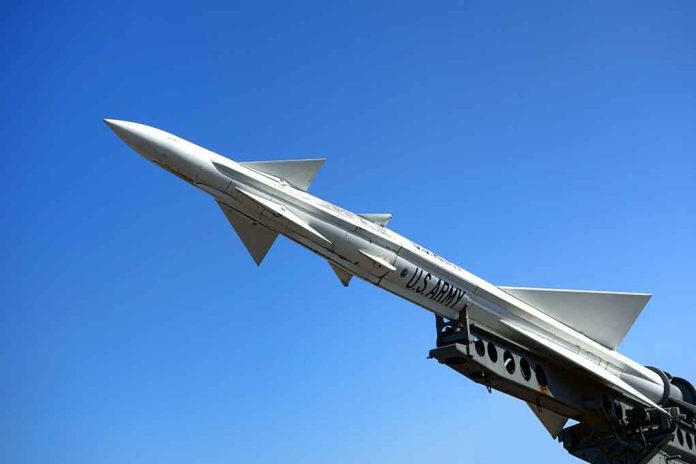
The Pentagon races to build a groundbreaking “Golden Dome” missile defense system under Trump’s directive, potentially transforming America’s national security posture while facing significant technological and financial hurdles.
Top Takeaways
- The Pentagon is developing the “Golden Dome” initiative, inspired by Israel’s Iron Dome, to protect America from nuclear, cruise, and hypersonic missile threats
- SpaceX, Palantir, and Anduril have emerged as frontrunners to build components of the system, with over 180 companies expressing interest
- The project could cost between $10 billion and several hundred billion dollars, with initial elements potentially operational by the end of 2025
- The comprehensive system would include both ground-based assets like Patriot missiles and space-based components with up to 1,000 satellites
- Full deployment is targeted for 2030, making it significantly more achievable than Reagan’s Strategic Defense Initiative due to technological advances
America’s Answer to the Iron Dome
President Trump has directed the Pentagon to fast-track development of the “Golden Dome,” an ambitious missile defense initiative modeled after Israel’s successful Iron Dome system. The executive order, signed during Trump’s first week in office, requires an initial blueprint by mid-April with some operational elements expected by the end of 2025. Unlike previous missile defense concepts, the Golden Dome aims to create a comprehensive shield capable of intercepting everything from traditional ballistic missiles to advanced hypersonic weapons that can evade current defense systems.
Defense officials are working on three potential implementation plans with costs ranging from approximately $10 billion for limited deployment to several hundred billion dollars for a full-scale system. Short-term options focus on repositioning existing defensive assets like Patriot missile batteries, THAAD systems, and Aegis-equipped naval vessels to create an initial defensive capability while longer-term solutions are developed. The Pentagon has scheduled a summit with defense contractors to discuss potential components and implementation strategies.
BREAKING: SpaceX is the leading contender to build Trump’s Golden Dome missile defense system, a large satellite network to detect threats.
SpaceX is expected to team up with Palantir and Anduril on the project, as per Reuters. pic.twitter.com/GeBsIBoM49
— DogeDesigner (@cb_doge) April 17, 2025
SpaceX and Partners Take the Lead
Elon Musk’s SpaceX, along with Palantir and Anduril, has emerged as a frontrunner to develop key components of the Golden Dome system. The space-based portion of the initiative could include launching between 400 and 1,000 satellites dedicated to tracking global missile movements, supplemented by a fleet of approximately 200 attack satellites designed to neutralize enemy projectiles. This would mark a significant evolution in military space technology and potentially the first U.S. space-based missile defense system of this scale.
In an interesting departure from traditional defense contracts, SpaceX has proposed a subscription model where the government would pay for access to the technology rather than purchasing it outright. This approach has raised some concerns about long-term government control over the system’s development and pricing. Over 180 companies have expressed interest in contributing to various aspects of the Golden Dome project, reflecting the scale and complexity of the initiative.
CNN: U.S. Military Working on "Golden Dome" Defense System at @POTUS #Trump's Request
According to CNN, the U.S. military is attempting to develop a defense system called "Golden Dome" at the request of President Donald Trump. The system aims to protect the entire country from… pic.twitter.com/PEuTXk7qm5
— UATV English (@UATV_en) March 22, 2025
Timeline and Strategic Importance
Defense experts estimate that while some components of the Golden Dome could be operational as early as next year, developing a comprehensive system will require five to seven years, with full deployment targeted for 2030. The accelerated timeline reflects the increasing urgency of missile defense in light of recent technological advances by potential adversaries, particularly China’s fractional orbital bombardment system and Russia’s hypersonic missile capabilities. Recent geopolitical events have underscored the perceived need for enhanced defensive capabilities.
“I’m glad President Trump came up with this idea, I hope he has the patience and the vision to recognize the importance of a long-term solution that really does define America, but it probably won’t really come into being until he’s out of office,” said retired Navy Admiral Mark Montgomery.
The Golden Dome initiative represents a significant technological leap beyond previous missile defense concepts like Reagan’s Strategic Defense Initiative, commonly known as “Star Wars.” Advances in computing power, sensor technology, and space launch capabilities have made the system technically feasible in ways that weren’t possible in the 1980s. However, challenges remain in coordinating the various components and ensuring the system can effectively counter the most advanced missile threats, particularly those designed to evade traditional interception methods.






















